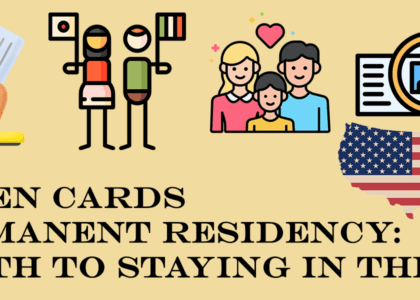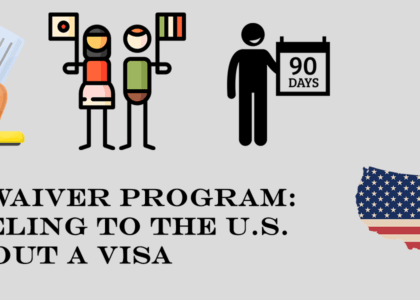You’ve made the big decision to study in the United States. Now comes the bureaucratic part—getting your student visa. The F-1 and M-1 visas are the most common for international students. The F-1 visa is for academic studies, while the M-1 is for vocational or technical schools. The process can seem daunting, but don’t worry; we’ve got you covered.
We’ll walk you through each step, from finding the right school and program to paying the SEVIS fee and scheduling your embassy interview. We’ll provide tips to help avoid common mistakes and pitfalls. Once you’ve been approved and landed in the U.S., we’ll give you advice on maintaining your status during your studies.
The student visa process requires patience, but many students have already navigated it successfully. Stay organized, start early, and ask questions if you get confused. You’ve worked hard to get this opportunity, so keep your eyes on the prize—your chance to study in America! With the right preparation, your student visa will be approved before you know it. The adventure of a lifetime awaits!
See also: J1 Visa Eligibility and Requirements
Understanding F-1 and M-1 Student Visas
To study in the US, most international students will need an F-1 or M-1 student visa. The F-1 visa is for full-time academic study, while the M-1 is for non-academic or vocational study.
Applying for an F-1 or M-1 visa
To obtain an F-1 or M-1 visa, you’ll first need to apply and be accepted to a US school that is approved to enroll international students. Once accepted, the school will issue you a 1-20 form, which you’ll need to schedule an interview at a US embassy or consulate in your home country. At the interview, be prepared to show proof of enrollment, proof of funding for tuition and living expenses, strong English skills, and a clear plan to return home after your studies.
If your F-1 or M-1 visa is approved, you can enter the US up to 30 days before your school’s start date. Your visa will specify if you’re allowed to work while studying, so check the details carefully. While in the US, you must maintain a full course of study, make progress toward completing your degree or program, and follow all rules regarding employment.
Every year, thousands of international students are granted F-1 and M-1 visas to study in the US. If you prepare well, provide all required documentation, and demonstrate your intent to study and return home, you’ll increase your chances of joining them. Best of luck!
Eligibility Requirements and Application Process for F-1 and M-1 Visas
To apply for an F-1 or M-1 student visa, you’ll need to meet a few requirements and go through the application process.
Eligibility
First, make sure you meet the eligibility criteria. For both visas, you must be enrolled in an academic program, an English language training program, or a vocational program. You’ll also need proof of funds to cover your tuition and living expenses during your stay.
1-20 or IAP-66 Form
Next, your designated school official will issue you a 1-20 form (for F-1 visas) or an IAP-66 form (for M-1 visas). This certifies that you meet admission requirements and that the program of study leads to a specific educational or professional objective.
Pay the SEVIS fee.
Then you must pay the SEVIS fee, which covers the cost of the Student and Exchange Visitor Information System. The current fee is $350. You can pay this online, by mail, or in person.
Complete the visa application.
After that, fill out the visa application on the U.S. State Department website. You’ll need to provide biographical information, upload a photo, and schedule an interview appointment at a U.S. embassy or consulate.
Attend the visa interview.
Finally, go to your scheduled visa interview prepared with all the required documentation. The interviewing officer will ask you questions about your intended program of study to determine if you meet all requirements. If approved, your student visa will be issued.
With the proper forms and materials in hand, navigating the F-1 and M-1 student visa processes will set you up for success as an international student in the United States. Stay organized, meet all deadlines, and don’t hesitate to ask your school for help. You’ve got this!
Maintaining Status as an F-1 or M-1 Student in the U.S.
To maintain your status as an F-1 or M-1 student in the U.S., there are a few key requirements you must follow. Failure to do so can result in losing your student status and being required to leave the country.
Enroll full-time
You must be enrolled full-time during the fall and spring semesters in a program that will lead to a degree. For undergraduates, this means at least 12 credit hours per semester. Graduate students should take at least 9 credit hours. If you need to drop below full-time status for any reason, speak to your school’s international student advisor first.
Make progress in your program
You must be making normal progress toward completing your degree program. This means passing your classes and maintaining a minimum GPA. Failing or withdrawing from too many classes can be a violation of your student status.
Limit on-campus employment
As an F-1 or M-1 student, you can work on-campus for up to 20 hours a week while school is in session. Make sure not to go over this limit, or you risk losing your student status. No off-campus work is allowed unless you obtain proper authorization.
Report changes
You must report certain changes to your school’s international student office within 10 days, such as a change of address, a change in funding, or a change in academic program. Failing to report significant changes is a violation of your student status.
Following these requirements carefully during your time in the U.S. as an international student will help ensure you maintain your legal F-1 or M-1 status and avoid issues. If you have questions or concerns, don’t hesitate to speak to your school’s international student advisor. They are there to help guide you through the process.
Conclusion
So now you’re equipped with the knowledge to navigate the student visa process in the US. While it can seem complicated if you make sure to give yourself plenty of time, do your research, and double-check the requirements, you’ve got this. Keep your eye on the prize: the opportunity to study in America, expand your horizons, and achieve your dreams. The student visa is just one step along the way, so take a deep breath and remember why you started this journey. Before you know it, you’ll be experiencing all the excitement of life as an international student in the US. The challenges of paperwork and bureaucracy will fade into the background, replaced by new friends, new experiences, and lasting memories. You’ve got this! Now go out there and achieve your goals. The US is waiting for you!






